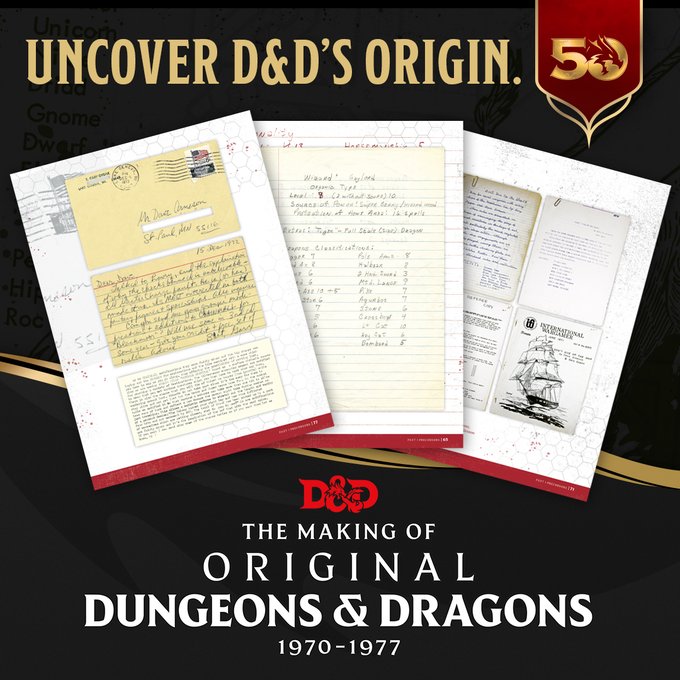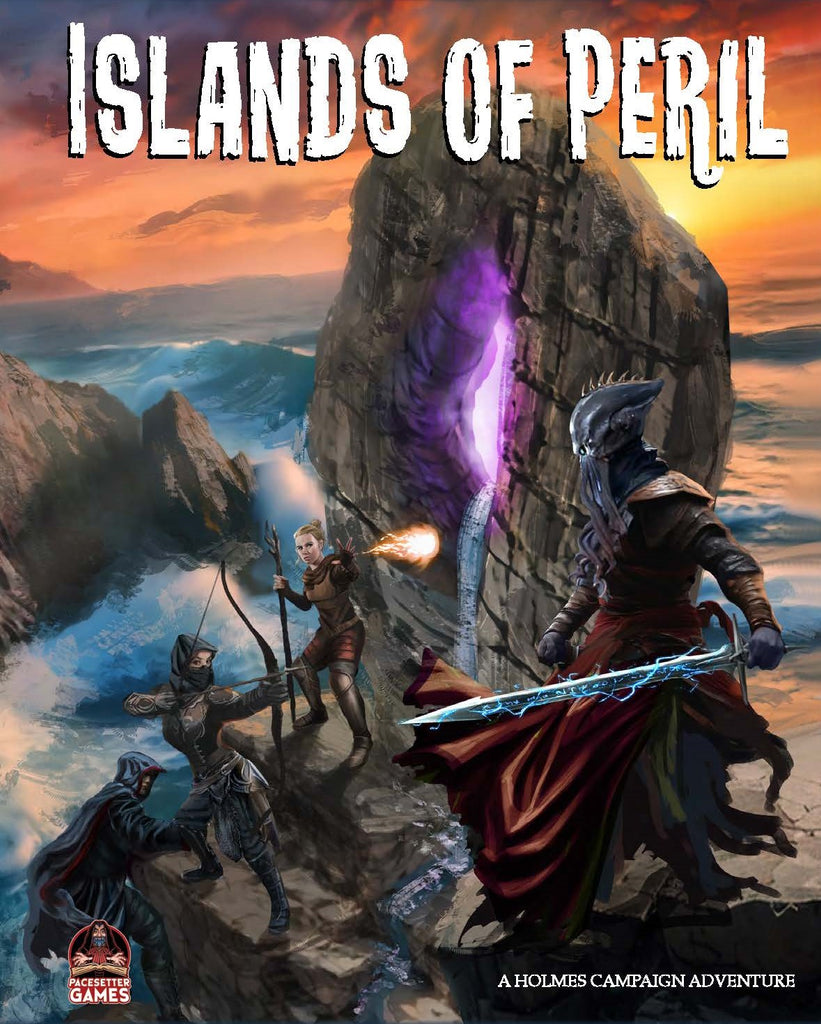 |
Letter from Gygax to an fan (1989) |
A not uncommon question about the rules in Holmes Basic is: "How long does the paralysis inflicted by Carrion Crawlers, Gelatinous Cubes or Ghouls last?"
This is asked because, in the Holmes rulebook, an attack by each of these monsters inflicts paralysis unless a saving throw is made, but none of the respective entries indicate how long the victim remains immobilized. One might assume that it wears off at some point after an encounter is over, or one might turn to the Wand of Paralyzation, which in Holmes has a duration of 6 turns for a failed save. Other than that, there's no specific guidance.
The lack of durations reflects the OD&D source material that Holmes relied on when editing the manuscript for the Basic rulebook. Carrion Crawlers and Gelatinous Cubes were introduced in the Greyhawk supplement, but neither specifies any duration for the paralysis they inflict. Ghouls were introduced earlier, in Vol 2 (Monsters & Treasure), where it says, "As stated in CHAINMAIL for Wights, Ghouls paralize any normal figure they touch, excluding Elves" (page 9). In Chainmail, the entry for "Wights (and Ghouls)" does make clear that their paralysis lasts for "one complete turn" of that game (page 33, 2nd edition), and while it is clear that Holmes did consult those rules for some aspects of Basic (such as the Parrying rule), for whatever reason he did not include this information, and neither did Gygax when he revised the manuscript before publication.
If Gygax eventually recognized that the omission of durations for paralysis in OD&D and Holmes Basic was an oversight, he had an opportunity to correct that in the AD&D Monster Manual, which came out about 6 months after Holmes and revised most of the existing D&D monsters. But he did this for only one of the three, the Gelatinous Cube, which now paralyzes for 5-20 (5d4) rounds. Notably, this duration also corresponds to the revised duration for the Wand of Paralyzation given in the AD&D Dungeon Masters Guide, published a few years later in 1979.
The Monster Manual still lacks durations for the Carrion Crawler and Ghoul as well as a number of new sources of paralysis: the breath weapon of Silver Dragons, the touch of Ghasts, the tentacles of the Giant Portuguese Man-O-War, and the secretions of the Slithering Tracker.
Why the seeming reluctance to add durations for monster paralysis? Later TSR products varied quite a bit in attempting to fill in the "missing" durations (look below for a list), which suggested that it was simply an oversight that was only slowly corrected. But was there another reason?
A recently uncovered 1989 letter from Gygax to a fan in Ecuador, posted on FB (see the image up above), sheds some light on his original view of paralysis. Unexpectedly, Gygax writes:
"Paralysis might be permanent. I finally gave in and said 5-20 minutes, but... I like it better as permanent until removed by something. You choose."
As an AD&D round corresponds to one minute, the 5-20 minutes noted here corresponds exactly to the 5-20 rounds that newly appears for the Gelatinous Cube in the Monster Manual, and for the wand in the Dungeon Masters Guide.
Thus, Gygax's comment surprisingly suggests that the reason he didn't include a duration for monster paralysis in early D&D products was because he viewed such paralysis as "permanent until removed by something"...!
His "something" is vague and not further explained in the letter. One possibility would simply be the same thing that restores hit points in OD&D: a return to base for complete rest. Per OD&D Vol 3: "On the first day of complete rest no hit points will be regained, but every other day thereafter one hit point will be regained until the character is completely healed. This can take a long time" (page 35). Others include those given in later rulesets: the second iteration of the Basic rulebook (Moldvay Basic) in 1981 newly allowed for Cure Light Wounds or Healing Potions to remove paralysis, and for AD&D, Lenard Lakofka created a new 3rd level cleric spell, Remove Paralysis, that appeared in Dragon #58 (February 1982) and then was compiled in Unearthed Arcana in 1985.
While "permanent" paralysis may seem harsh, if viewed in the context of a game also replete with "save or die" poisons, "save or permanent paralyzation" fits in as a permanent consequence that is not quite as bad as death.
* * * * *
As an addendum, with regard to Carrion Crawler & Ghoul paralysis, later TSR D&D products gave a variety of answers to this:
---In T1 The Village of Hommlet (1979) by Gygax, ghoul paralysis is given a duration of 3-12 (3d4) turns.
---In Dragon #37 (May 1980), the Sage Advice column written by Jean Wells answered the question, "How long does the paralysis caused by a carrion crawler, ghast or ghoul last?" with "I have always assumed it to be 24 hours. However, since the duration of the paralysis is not clearly defined in any of the books, I suggest that each DM decide the duration in his particular campaign" (page 12). I note that a duration of a full day is much closer to the "permanent until removed by something" suggested by Gygax than any of the other suggested durations listed here.
---In Dragon #39, a followup Sage Advice column clarifies the above: "According to Lawrence Schick, Vice-President for Production and Design at TSR Hobbies, the paralyzation caused by carrion crawlers is of the same duration as that caused by ghouls— 3-12 turns. Paralyzation caused by a ghast takes twice as long—6-24 turns—to wear off". This duration for ghouls is the same as given in T1.
---In Moldvay Basic (1981), the paralyzation of Carrion Crawlers, Gelatinous Cubes, Ghouls and new Thouls is standardized as a shorter 2-8 (2d4) turns.
---In Polyhedron #2 (Autumn 1981), in the Dispel Confusion column, Gary Gygax answered the question, "How long does (or should) paralysis caused by a carrion crawler last? And what, if any, are the effects of multiple hits by this creature?", with:
"Paralysis from creatures lasts as long as paralysis from a wand: 5d4 (5-20) rounds (DMG page 136). Multiple hits from a carrion crawler (or any other paralyzing creature) forces multiple saving throws on the part of the victim; when any one is failed, the other hits have no further effect on the paralysis (damages still apply if given, such as by a ghoul or ghast)."
This is the only published source that really matches Gygax's later letter in giving a generalized 5d4 rounds for paralysis.
---In TSR's Monster Cards (1982), part of the AD&D line, Ghoul and Carrion Crawler paralysis are instead each given a duration of 2d6 turns. These cards include revised entries from the Monster Manual, so are often viewed as "official" revisions for AD&D.
---In the AD&D 2E Monstrous Manual (1989), we see a different duration for each monster: Carrion Crawler, 2d6 turns; Gelatinous Cube, 5d4 rounds; Ghoul, 1d6+2 rounds; and the Ghast, 1d6+4 rounds.








